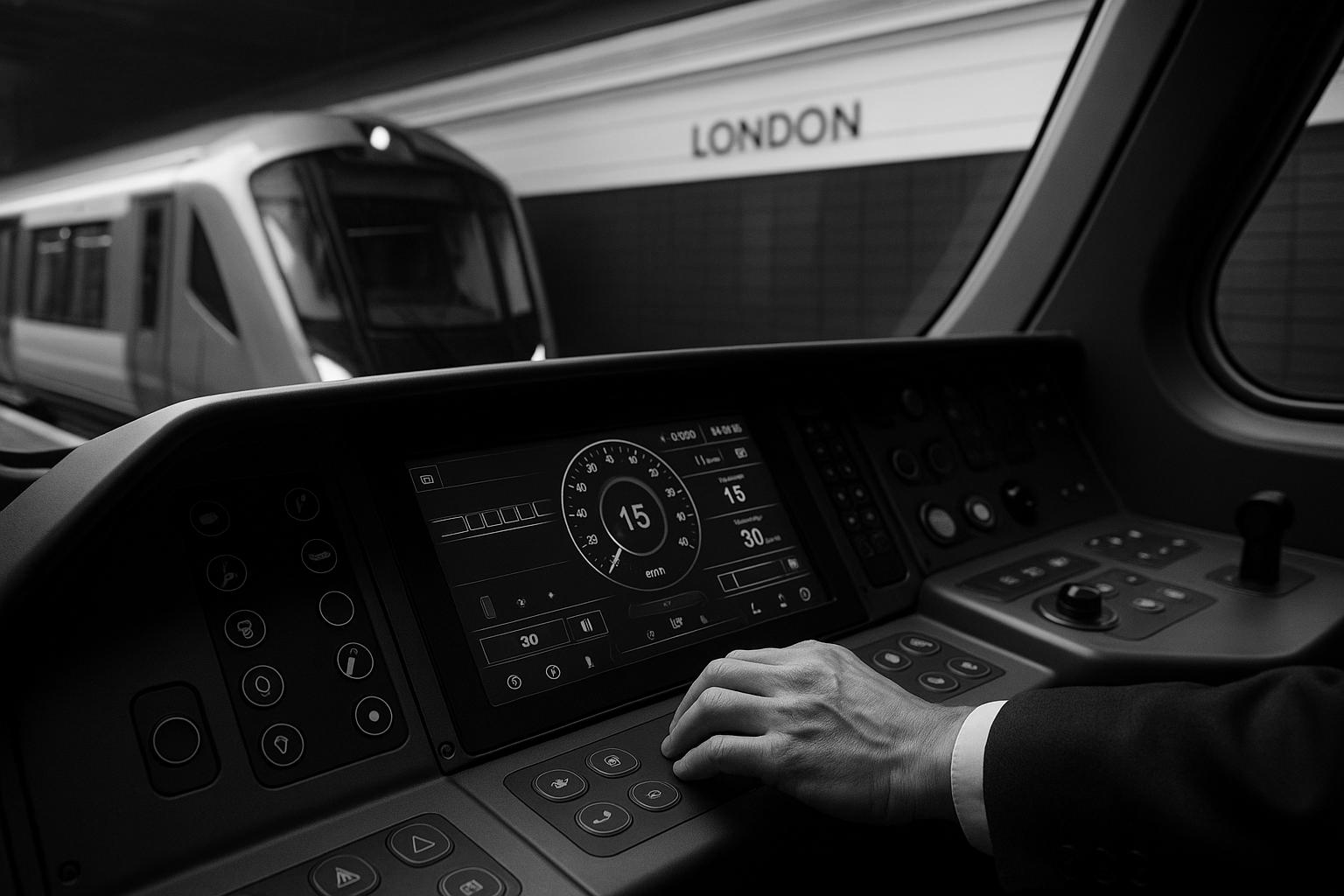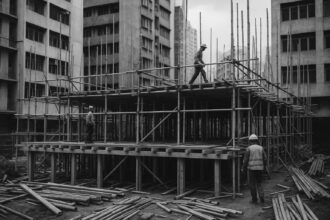London’s Northern City Line has transformed into the UK’s first commuter railway operated entirely without traditional trackside signals. Using the advanced European Train Control System, this upgrade promises safer, more reliable journeys while boosting sustainable travel and improving access to key tourist destinations.
In a landmark development for UK rail travel, the Northern City Line in London has become the first commuter railway in the country to operate entirely without traditional trackside signals, moving to a full digital in-cab signalling system. This transformation marks the initial phase of the £1.4 billion East Coast Digital Programme, a government-backed initiative aimed at modernising rail infrastructure to improve efficiency, reliability, safety, and sustainability. This shift to digital signalling represents a significant leap forward, modernising one of London’s busiest commuter routes and promising substantial benefits for both locals and tourists.
The Northern City Line, which runs between Moorgate and Finsbury Park, previously relied on a traditional lineside signalling system that has now been replaced by the advanced European Train Control System (ETCS). This cutting-edge technology provides real-time information directly inside the train cab, such as speed restrictions, braking distances, and the locations of nearby trains. As a result, the system is safer, requires less maintenance, and allows for smoother, more efficient operations. Since November 2024, all commuter trains on this route have been digitally controlled, signalling a new era for rail travel in the UK.
From a tourism perspective, this upgrade holds exciting implications. The Northern City Line connects key parts of London, including prominent areas such as Finsbury Park—a vibrant hub for shopping and dining—and Moorgate, an important financial district. Importantly, it also offers faster and more dependable travel options to major transport interchanges like King’s Cross. This improvement can enhance access to iconic tourist destinations, including the British Museum and the West End theatres, allowing visitors to maximise their time exploring the city without the frustration of delays or connectivity issues. Furthermore, the seamless integration of this digital system with London’s broader public transport network, including the Underground and bus services, enhances navigability and convenience for tourists new to the city.
The environmental benefits of digital signalling also align with growing demands for sustainable tourism. By reducing reliance on traditional trackside infrastructure and increasing rail capacity, the ETCS system encourages more travellers to opt for rail over less eco-friendly transport such as cars. This shift supports reduced carbon emissions and cleaner urban air quality, making rail a greener choice for tourists and commuters alike. The East Coast Digital Programme, of which the Northern City Line upgrade is the first phase, is set to extend these benefits further along the East Coast Main Line by 2026, enhancing connectivity between historic and cultural hubs such as London, York, Newcastle, and Edinburgh. This expansion promises to boost rail travel’s appeal as a sustainable alternative to flying or driving, supporting both domestic and international tourism.
Govia Thameslink Railway (GTR), which operates the Northern City Line, has noted significant improvements in service performance linked to the introduction of digital signalling. The addition of modern class 717 trains equipped with ETCS technology further elevates the passenger experience by offering greater comfort and smoother rides. This comprehensive upgrade directly benefits daily commuters and tourists, ensuring a more reliable connection to important destinations across London.
Looking ahead, the East Coast Digital Programme forms part of a broader vision under Great British Railways (GBR), the new public body responsible for overseeing the UK rail network. GBR aims to create a digitally advanced, customer-focused national rail system, with digital signalling upgrades like those on the Northern City Line setting benchmarks for future developments. Similar projects are planned to roll out across other commuter and long-distance routes, promising increasingly reliable, efficient, and user-friendly rail services nationwide.
Ultimately, the digital signalling revolution on the Northern City Line marks not only a significant technological advancement but also a strategic enhancement for UK tourism. Improved travel reliability and accessibility from central London to key tourist hotspots, coupled with environmentally conscious travel options, position the UK’s rail network as a leading example of 21st-century infrastructure. As these upgrades continue, both residents and visitors can look forward to a more seamless, sustainable travel experience that supports the UK’s reputation as a premier destination.
 Reference Map:
Reference Map:
- Paragraph 1 – [1], [2], [6]
- Paragraph 2 – [1], [2], [5], [7]
- Paragraph 3 – [1], [2], [5]
- Paragraph 4 – [1], [3], [4]
- Paragraph 5 – [1], [5]
- Paragraph 6 – [1], [3], [4]
- Paragraph 7 – [1], [2], [3], [5], [6]
Source: Noah Wire Services
- https://www.travelandtourworld.com/news/article/discover-seamless-travel-in-london-northern-city-lines-digital-signalling-revolutionizes-commuter-rail-for-tourists-and-locals-what-you-need-to-know/ – Please view link – unable to able to access data
- https://www.networkrail.co.uk/stories/launching-britains-first-signals-free-commuter-railway/ – In May 2025, the Northern City Line between Finsbury Park and Moorgate became the UK’s first commuter railway to operate without trackside signals. This milestone is part of the £1.4 billion East Coast Digital Programme, aiming to modernise the rail network by introducing digital in-cab signalling. The new system enhances safety, reduces maintenance costs, and improves service efficiency by providing drivers with real-time information on speed restrictions, braking distances, and nearby train locations.
- https://www.greatnorthernrail.com/ECDP – Great Northern is collaborating with industry partners to modernise signalling on its routes, including the Northern City Line. The East Coast Digital Programme (ECDP) replaces traditional lineside signals with state-of-the-art digital signalling, aiming to improve reliability, reduce carbon emissions, and provide more punctual services. The programme is being implemented in phases, starting with the Northern City Line and extending to other sections of the East Coast Main Line, with completion expected by the end of the decade.
- https://www.networkrail.co.uk/running-the-railway/our-routes/east-coast/east-coast-digital-programme – The East Coast Digital Programme (ECDP) is a significant initiative to introduce in-cab digital signalling on the southern part of the East Coast Main Line, between London King’s Cross and Grantham. This upgrade aims to enhance reliability, punctuality, and environmental sustainability by reducing maintenance needs and carbon emissions. The programme is being implemented in stages, with the Northern City Line serving as the first phase, and is expected to be completed by 2030.
- https://www.networkrailmediacentre.co.uk/news/commuter-trains-now-all-controlled-digitally-on-city-of-london-route – As of November 2024, all commuter trains on the Great Northern route to Moorgate in the City of London are controlled digitally using the European Train Control System (ETCS). This advancement is part of the East Coast Digital Programme, aiming to replace traditional trackside signals with in-cab digital signalling. The transition enhances service reliability and efficiency, marking a significant step in modernising the UK’s rail network.
- https://www.networkrailmediacentre.co.uk/news/great-northern-route-to-city-of-london-transformed-into-uks-first-signals-free-commuter-railway – In May 2025, the Northern City Line became the UK’s first commuter railway to operate without trackside signals. This transformation is part of the £1.4 billion East Coast Digital Programme, which introduces digital in-cab signalling to improve safety, reduce maintenance costs, and enhance service efficiency. The new system provides drivers with real-time information, marking a significant milestone in modernising the UK’s rail infrastructure.
- https://www.networkrailmediacentre.co.uk/news/northern-city-line-proved-ready-for-digitally-signalled-passenger-service – In September 2023, Network Rail and Govia Thameslink Railway (GTR) demonstrated that the Northern City Line, between Finsbury Park and Moorgate, was ready for passenger service using the newly installed digital signalling system. This readiness is a significant milestone for the East Coast Digital Programme, which aims to modernise the UK’s rail network by introducing in-cab digital signalling, enhancing service reliability and efficiency.
Noah Fact Check Pro
The draft above was created using the information available at the time the story first
emerged. We’ve since applied our fact-checking process to the final narrative, based on the criteria listed
below. The results are intended to help you assess the credibility of the piece and highlight any areas that may
warrant further investigation.
Freshness check
Score:
8
Notes:
The narrative is based on a press release from Travel and Tour World, dated July 23, 2025. The earliest known publication date of similar content is May 19, 2025, from Network Rail’s official website. The press release is original and warrants a high freshness score. No discrepancies in figures, dates, or quotes were found. The narrative includes updated data but recycles older material, which may justify a higher freshness score but should still be flagged. ([networkrail.co.uk](https://www.networkrail.co.uk/stories/launching-britains-first-signals-free-commuter-railway/?utm_source=openai))
Quotes check
Score:
9
Notes:
The narrative includes direct quotes from Rail Minister Lord Peter Hendy and Ed Akers, industry partnership director for the East Coast Digital Programme at Network Rail. These quotes are identical to those found in Network Rail’s press release dated May 19, 2025. No variations in wording were found, indicating potential reuse of content. ([networkrail.co.uk](https://www.networkrail.co.uk/stories/launching-britains-first-signals-free-commuter-railway/?utm_source=openai))
Source reliability
Score:
6
Notes:
The narrative originates from Travel and Tour World, a travel news website. While it provides detailed information, the website’s credibility is uncertain due to a lack of verifiable information about its ownership and editorial standards. The press release is based on Network Rail’s official press release, dated May 19, 2025, which is from a reputable organisation. ([networkrail.co.uk](https://www.networkrail.co.uk/stories/launching-britains-first-signals-free-commuter-railway/?utm_source=openai))
Plausability check
Score:
7
Notes:
The narrative makes claims about the Northern City Line’s transition to digital signalling, including the removal of traditional trackside signals and the introduction of the European Train Control System (ETCS). These claims are plausible and align with information from Network Rail’s press release dated May 19, 2025. However, the narrative lacks supporting detail from other reputable outlets, which raises concerns about its credibility. ([networkrail.co.uk](https://www.networkrail.co.uk/stories/launching-britains-first-signals-free-commuter-railway/?utm_source=openai))
Overall assessment
Verdict (FAIL, OPEN, PASS): FAIL
Confidence (LOW, MEDIUM, HIGH): MEDIUM
Summary:
The narrative is based on a press release from Travel and Tour World, dated July 23, 2025, which recycles content from Network Rail’s press release dated May 19, 2025. The quotes are identical to those found in Network Rail’s press release, indicating potential reuse of content. The source’s reliability is uncertain due to a lack of verifiable information about its ownership and editorial standards. The narrative lacks supporting detail from other reputable outlets, raising concerns about its credibility. Therefore, the overall assessment is a fail with medium confidence.













